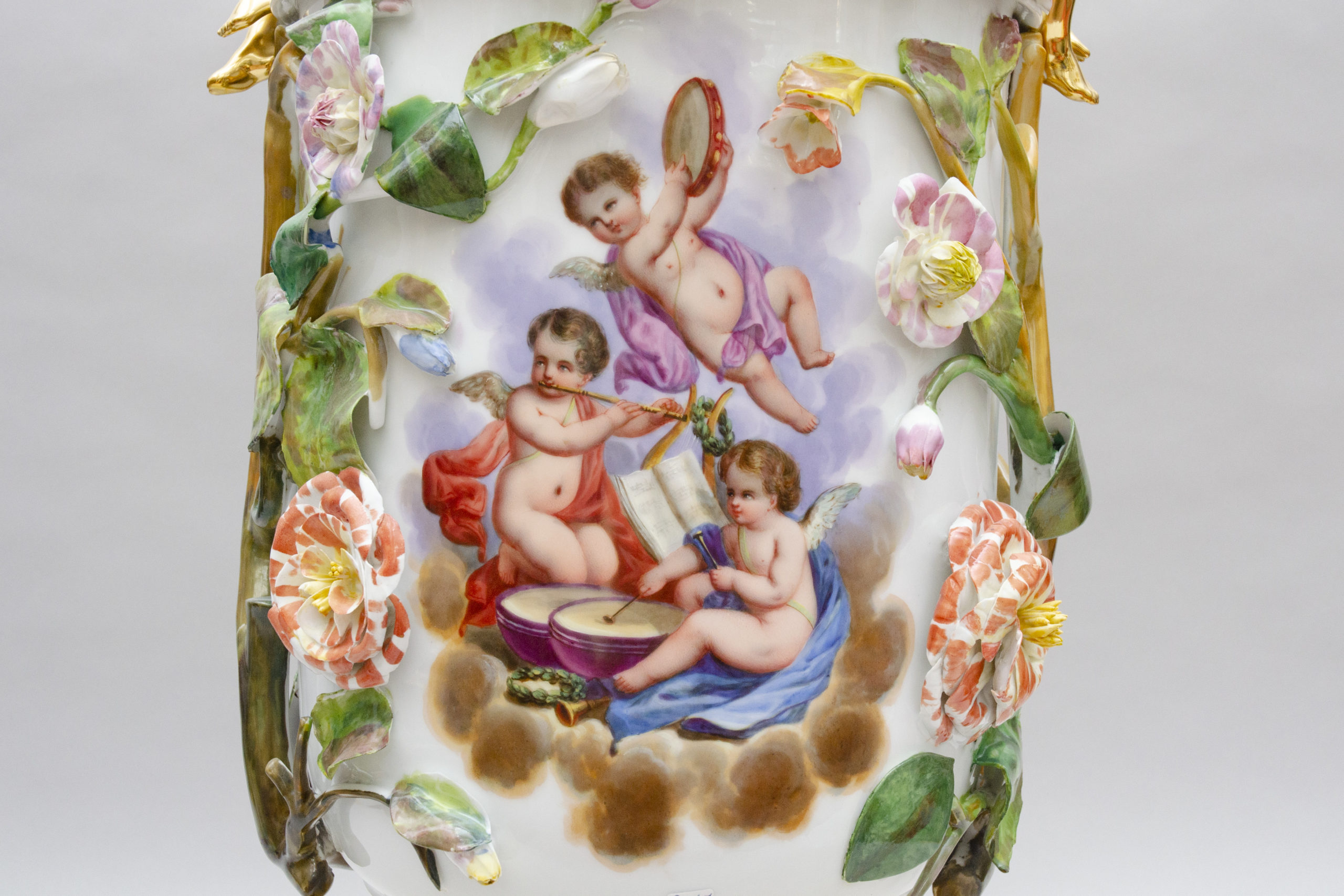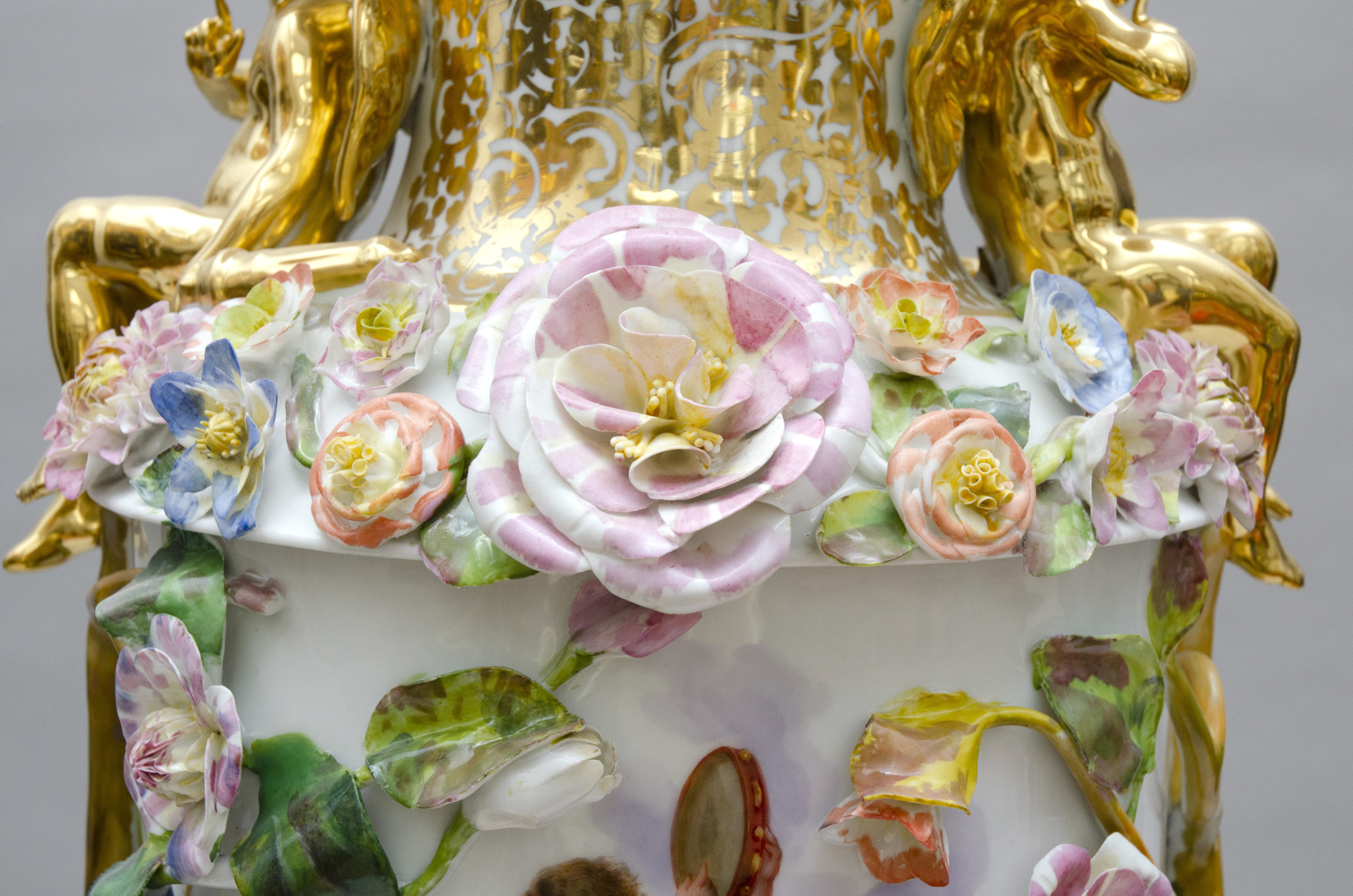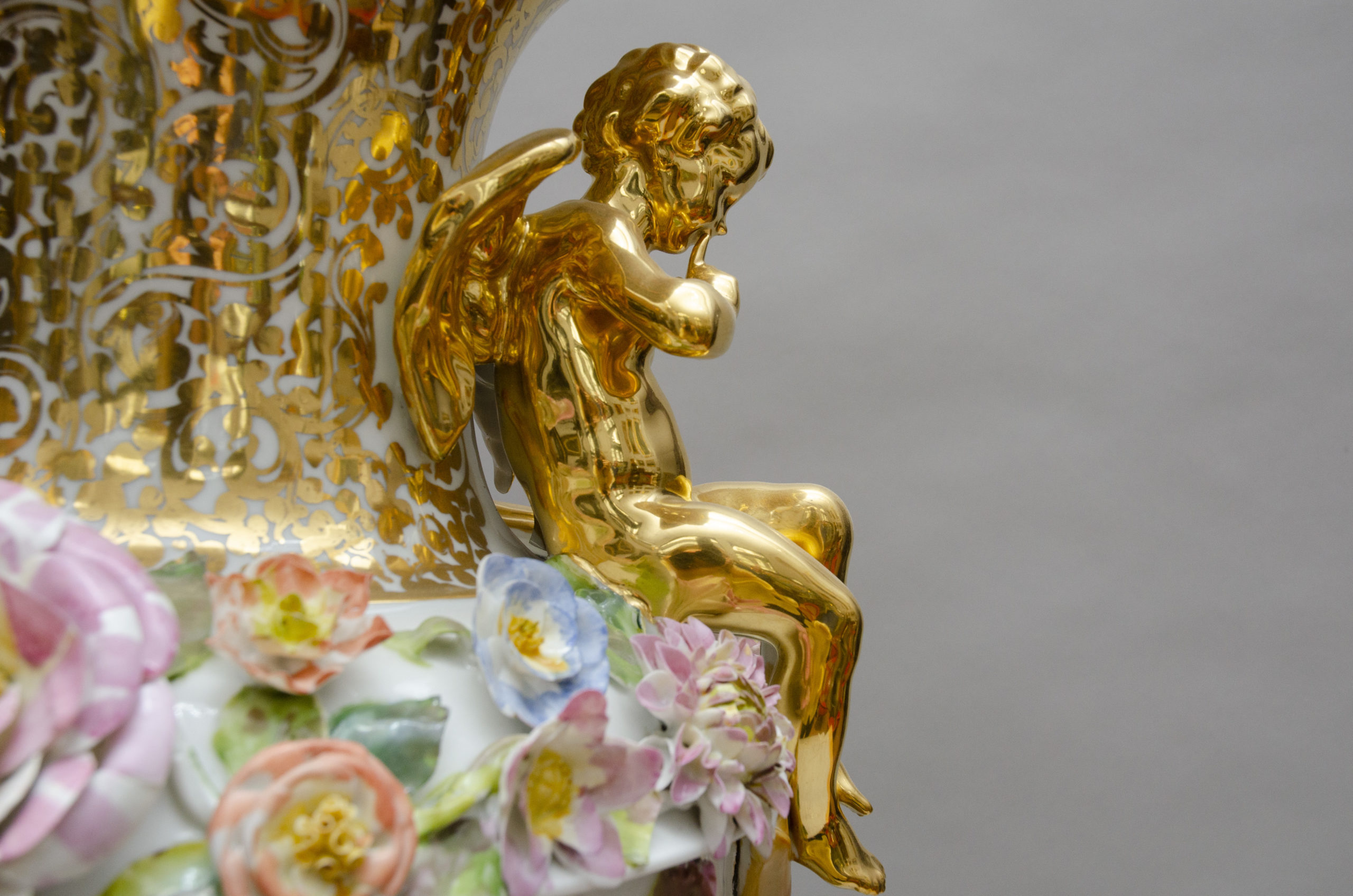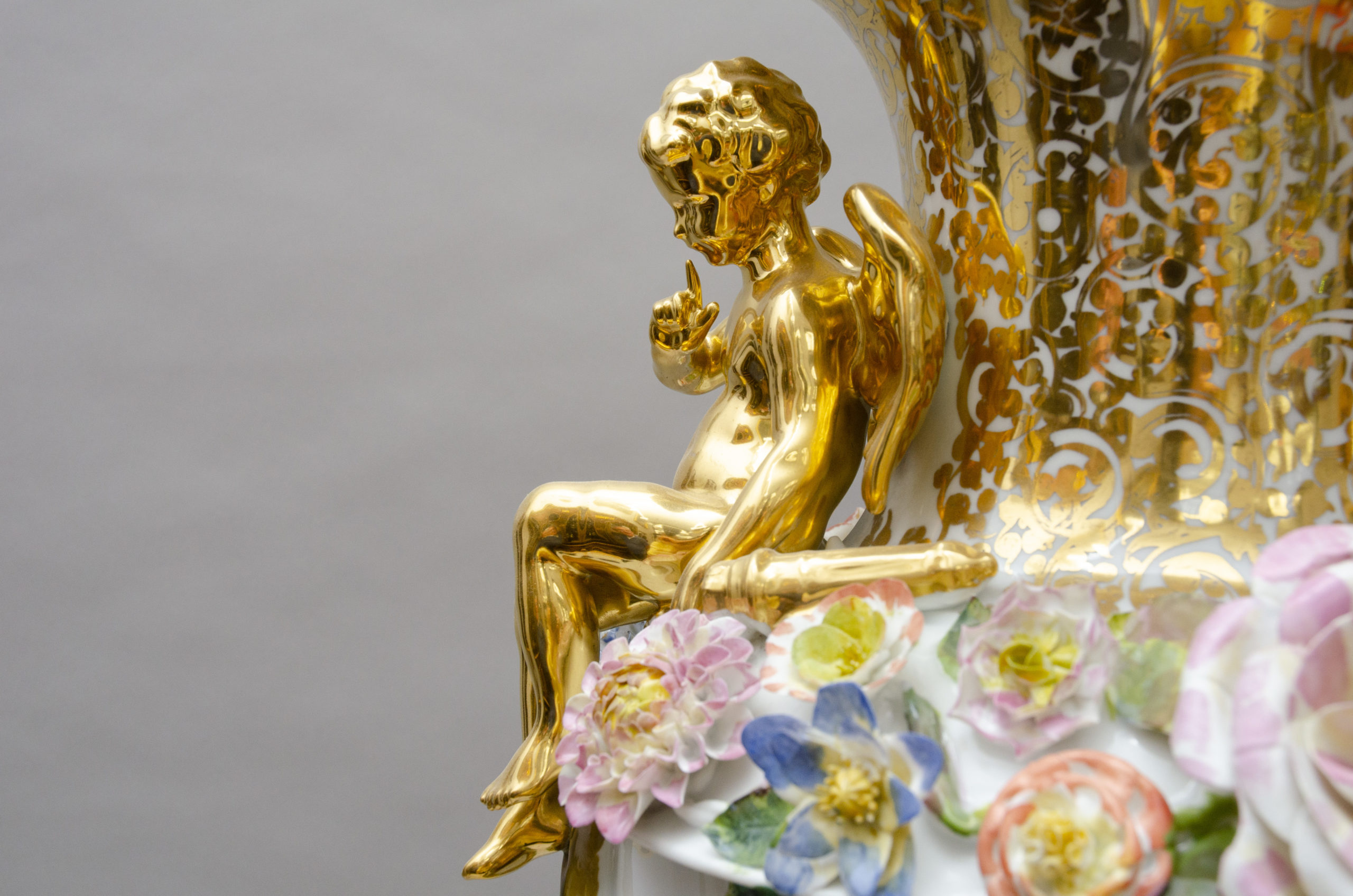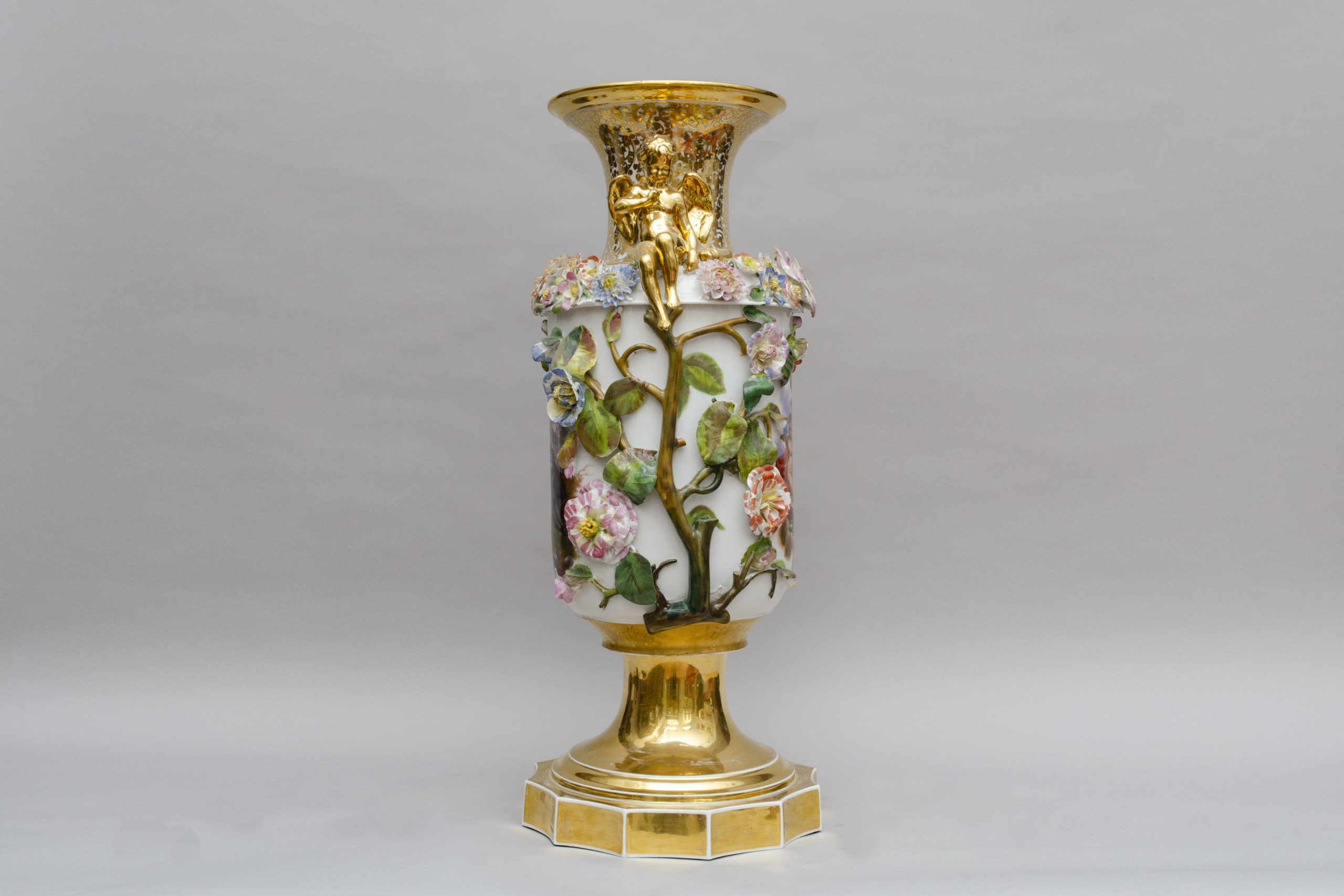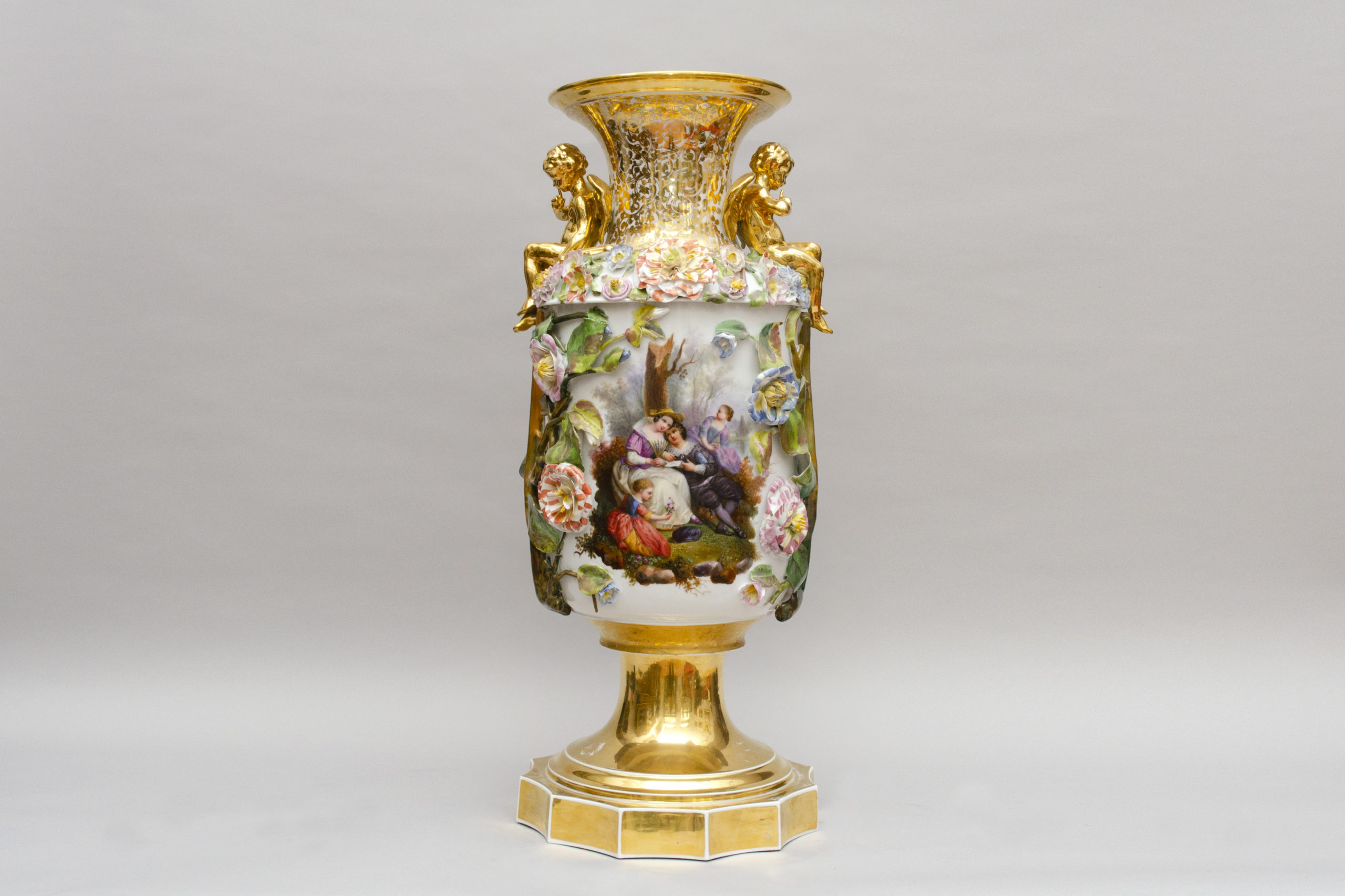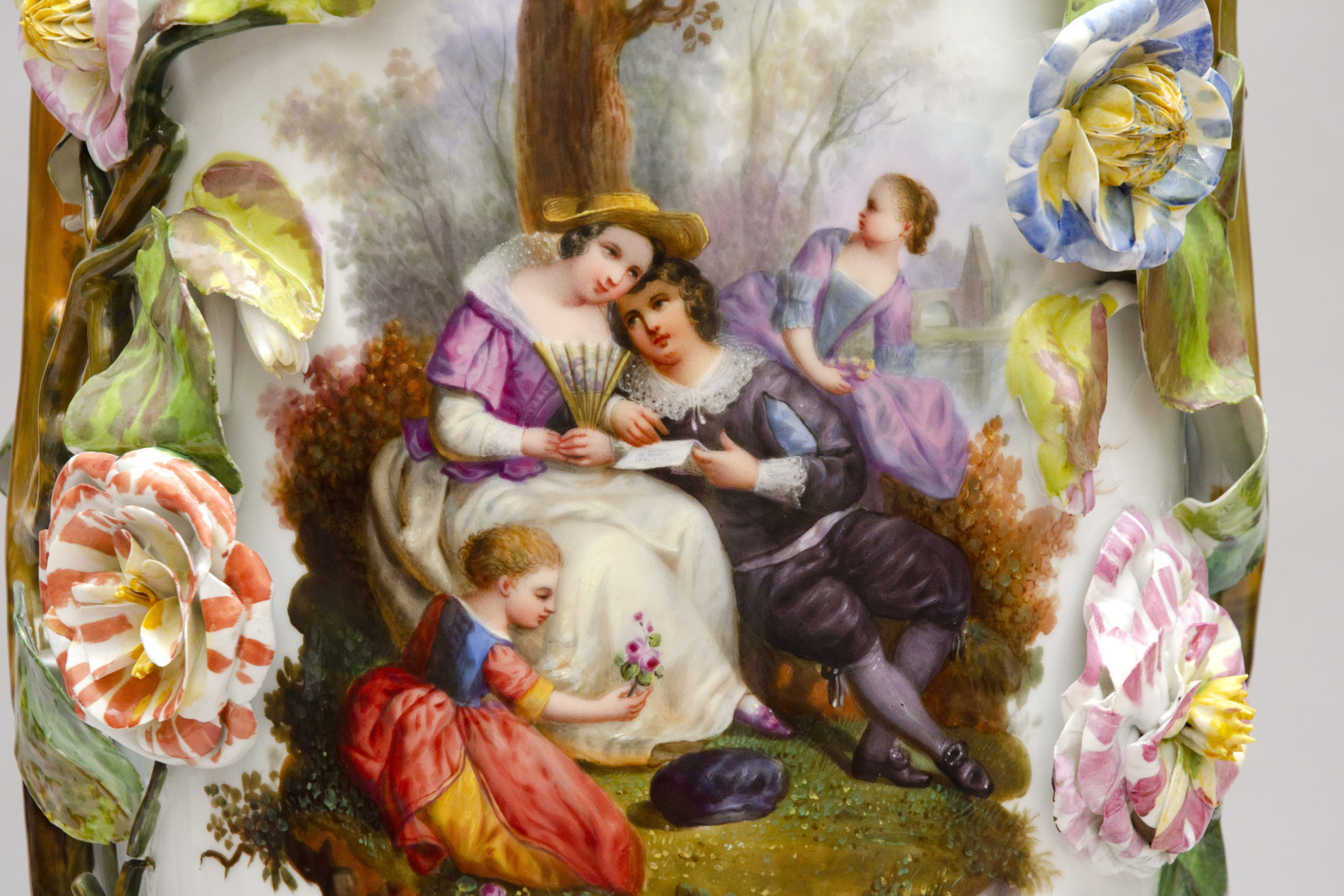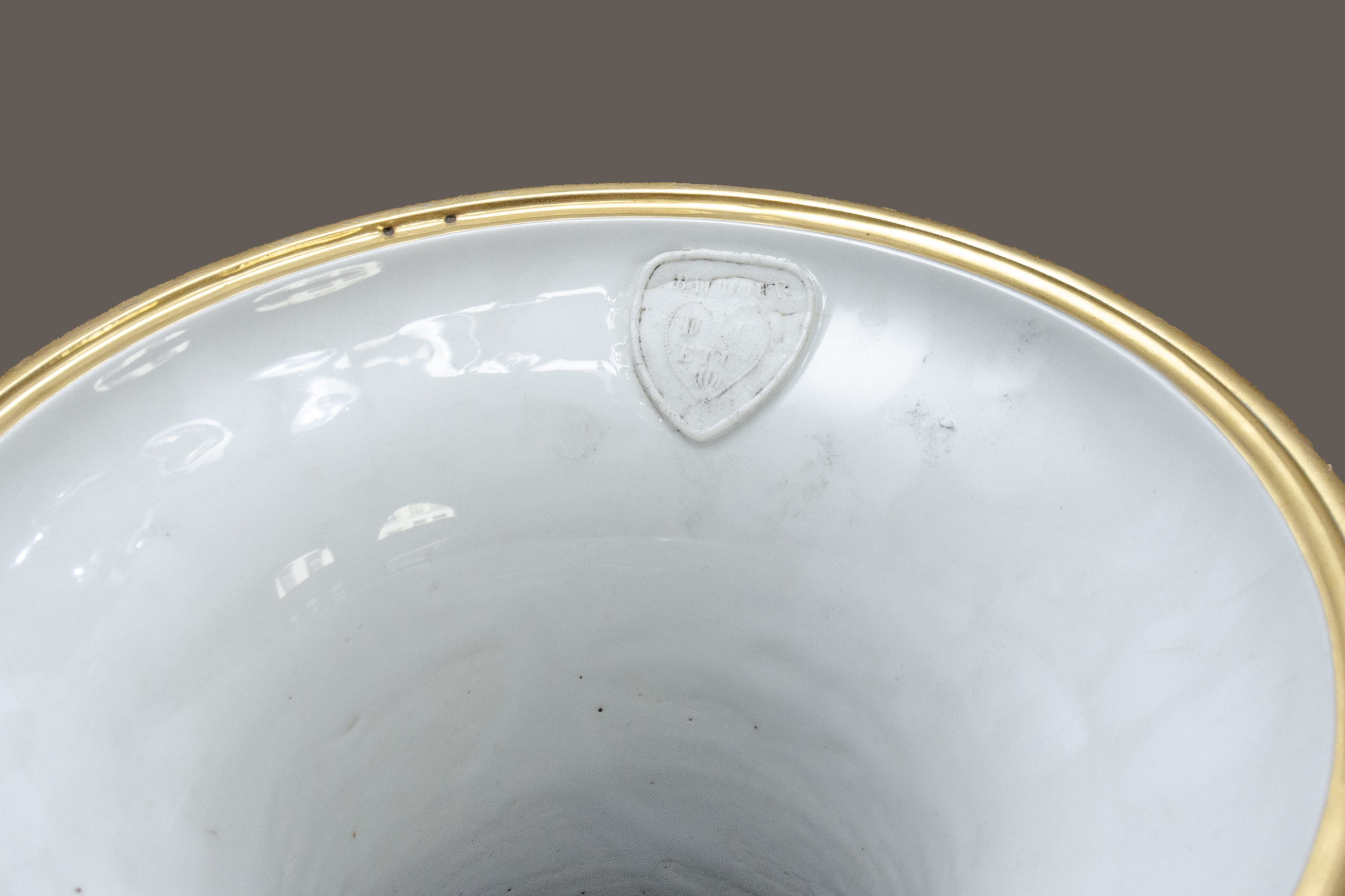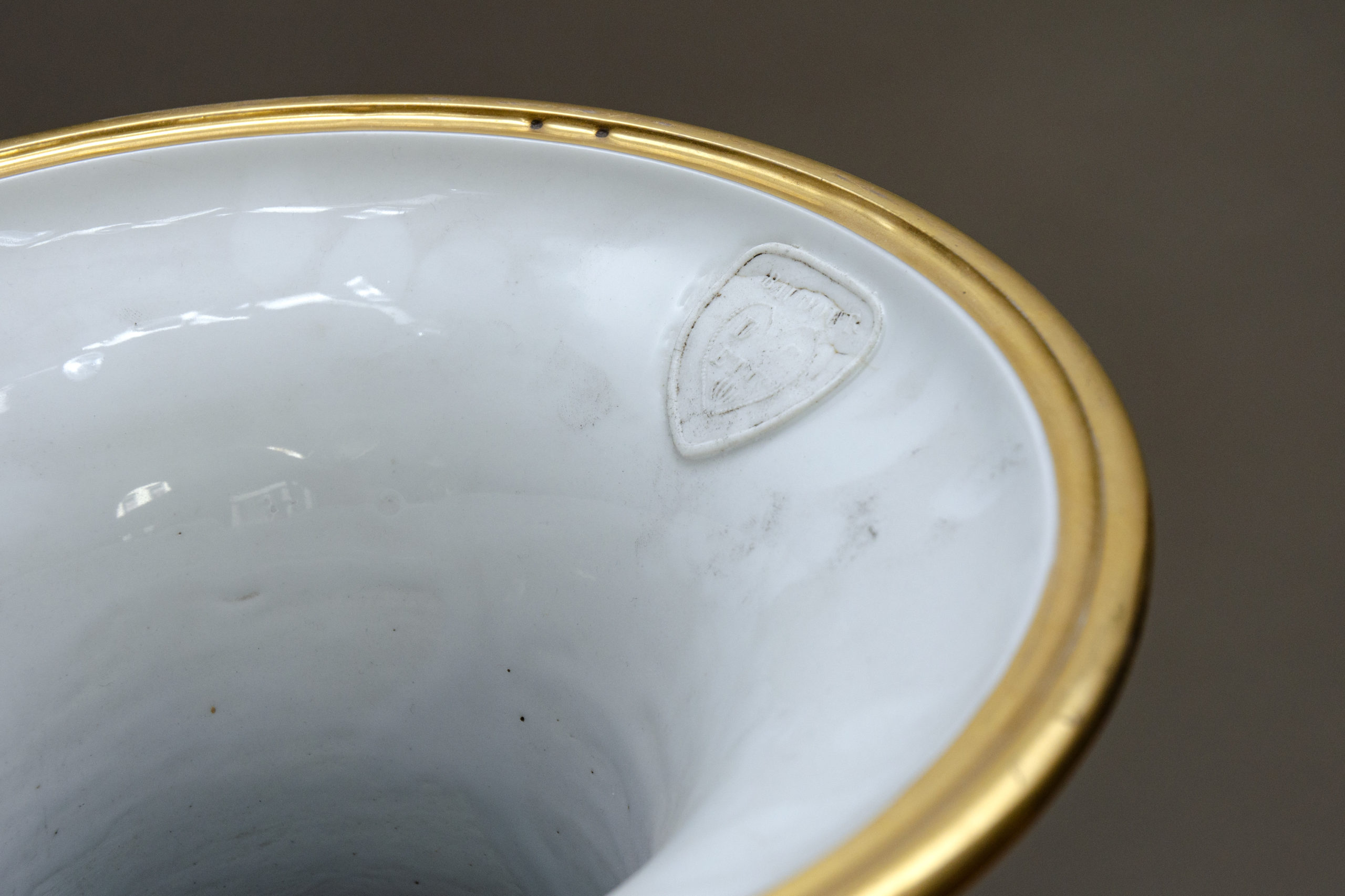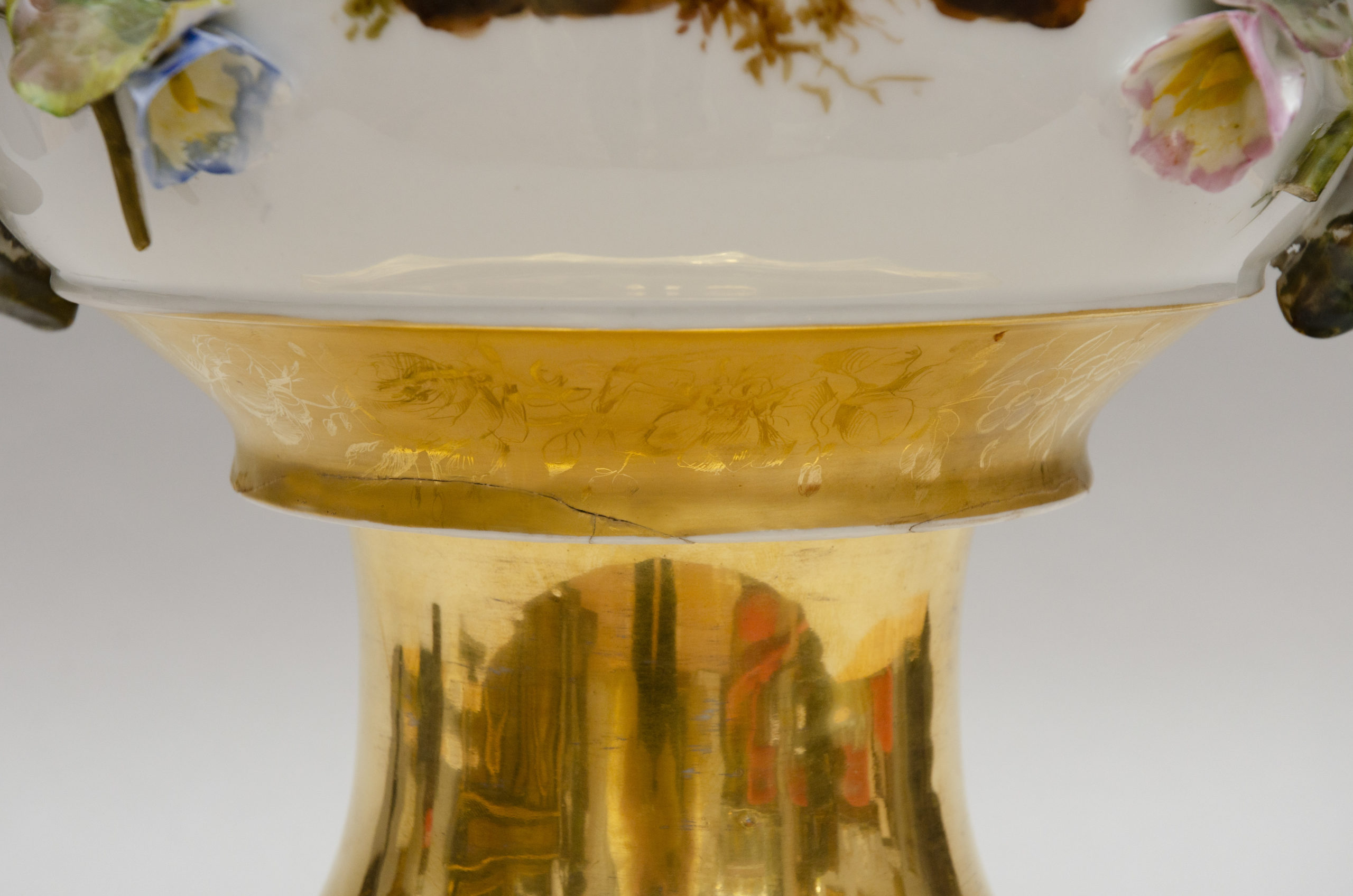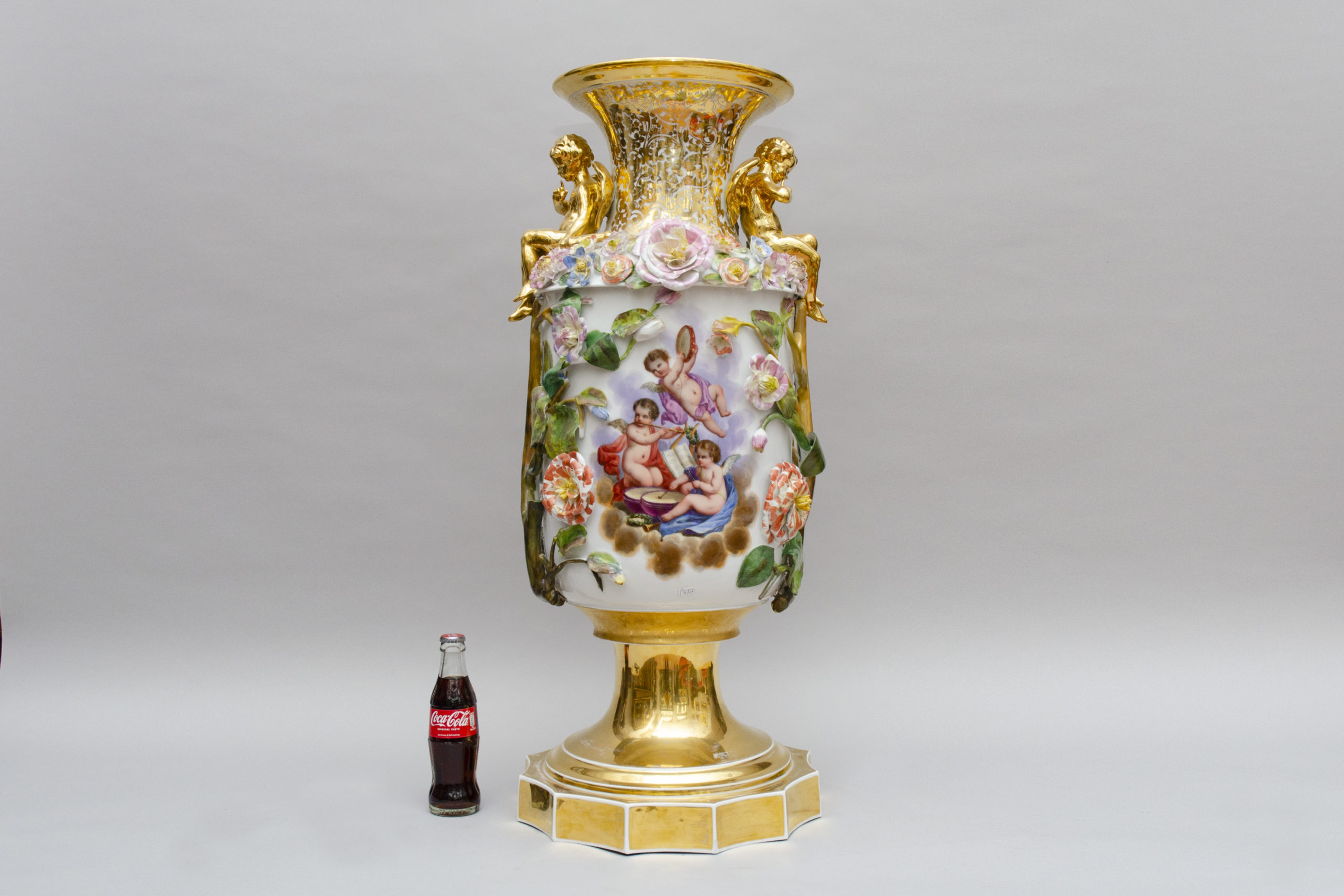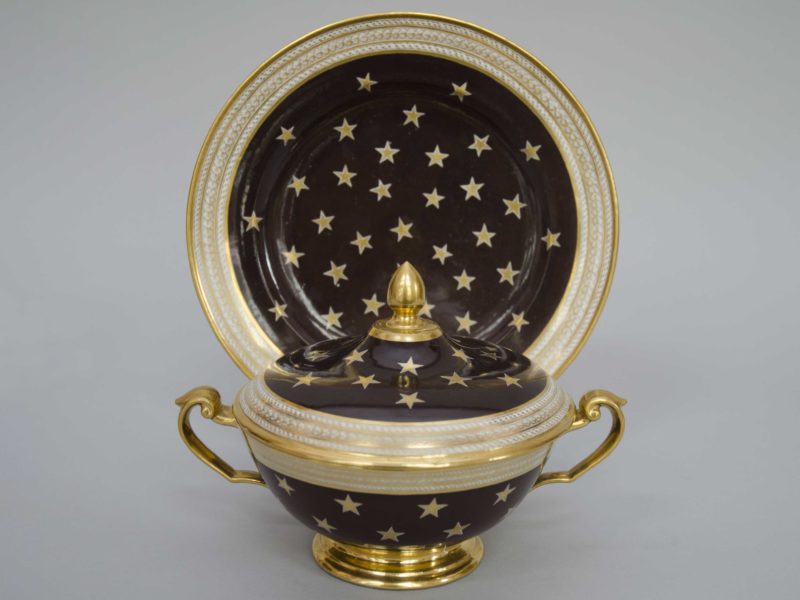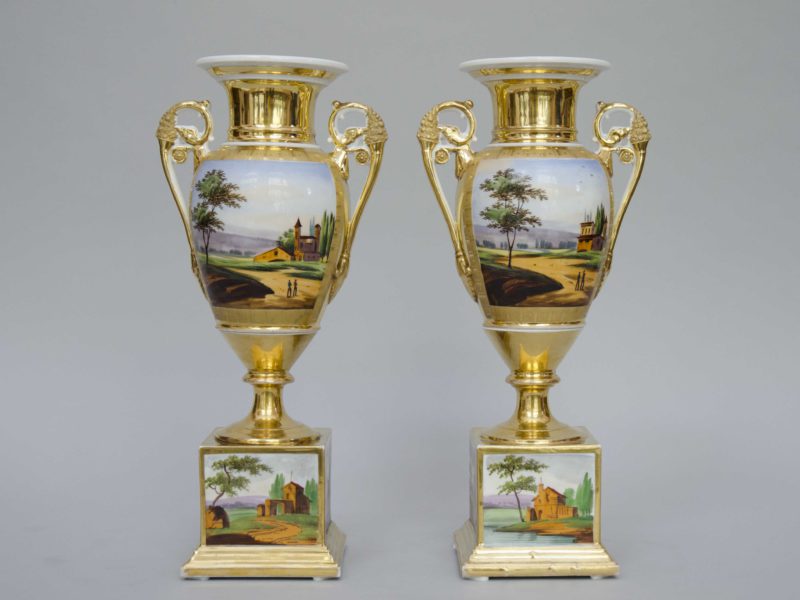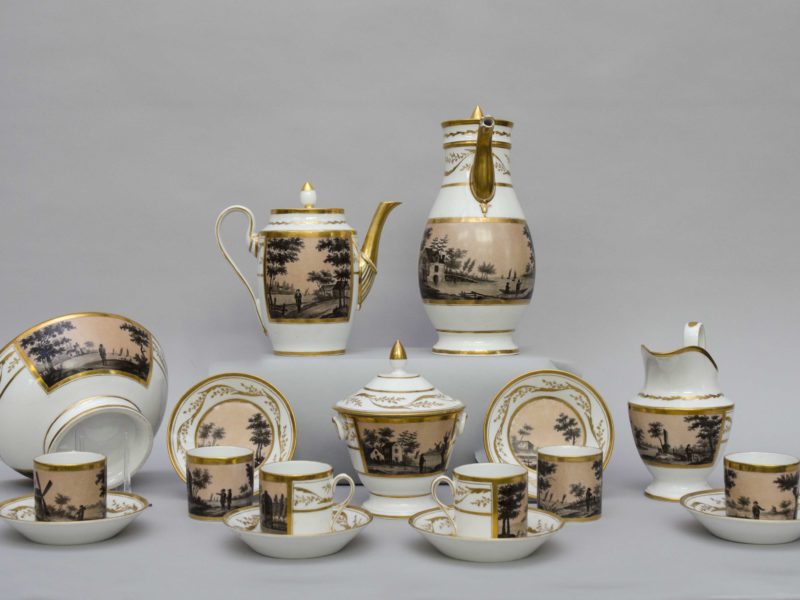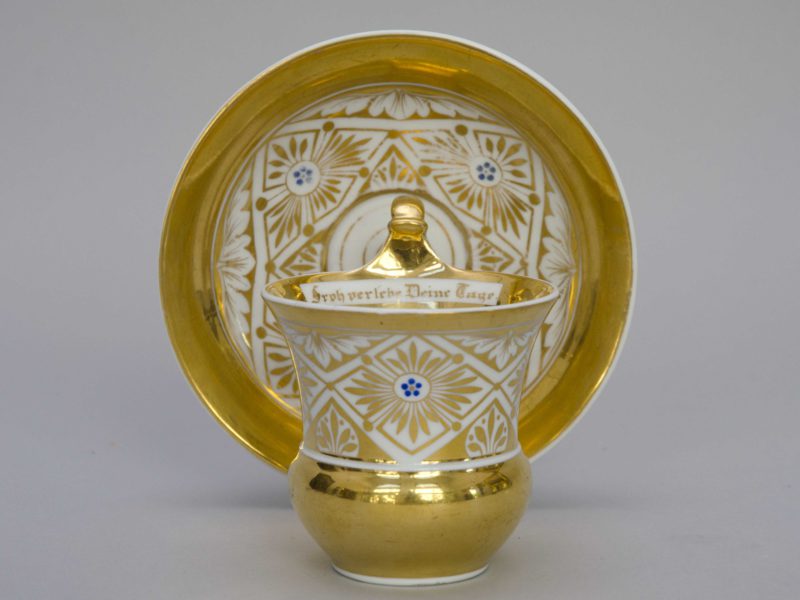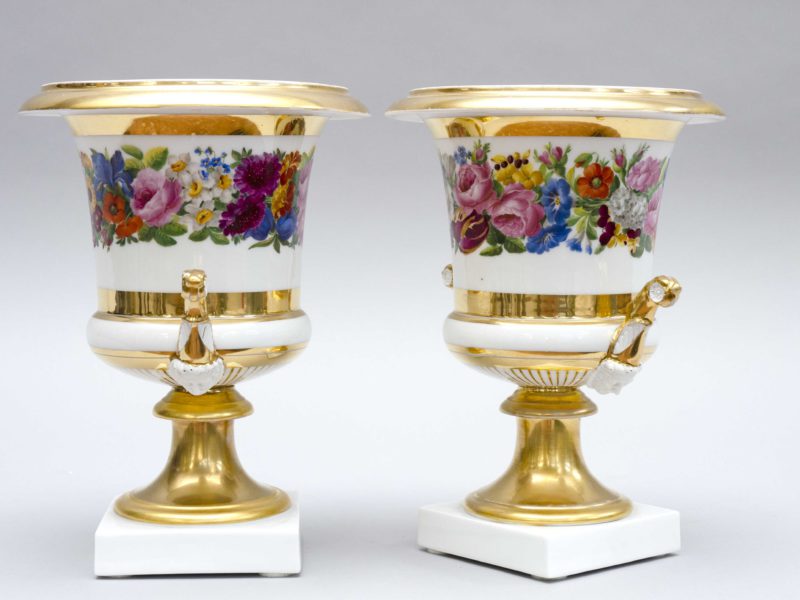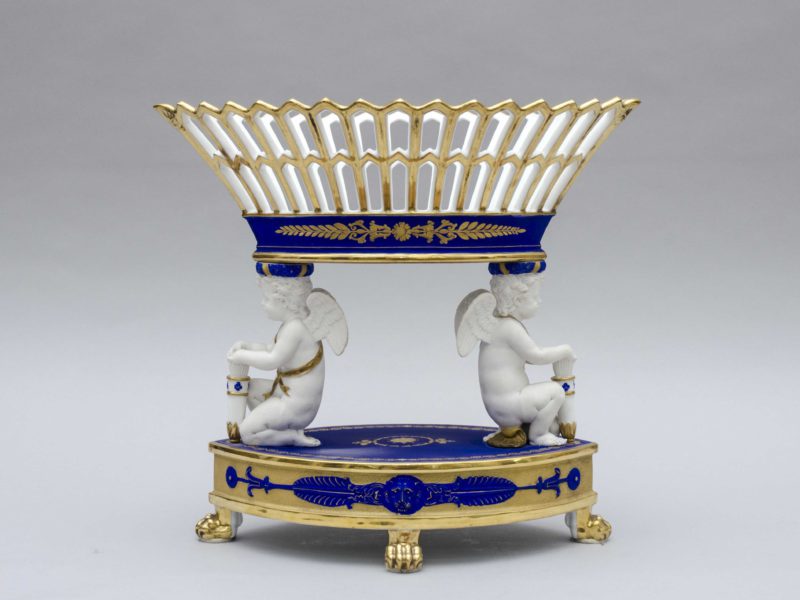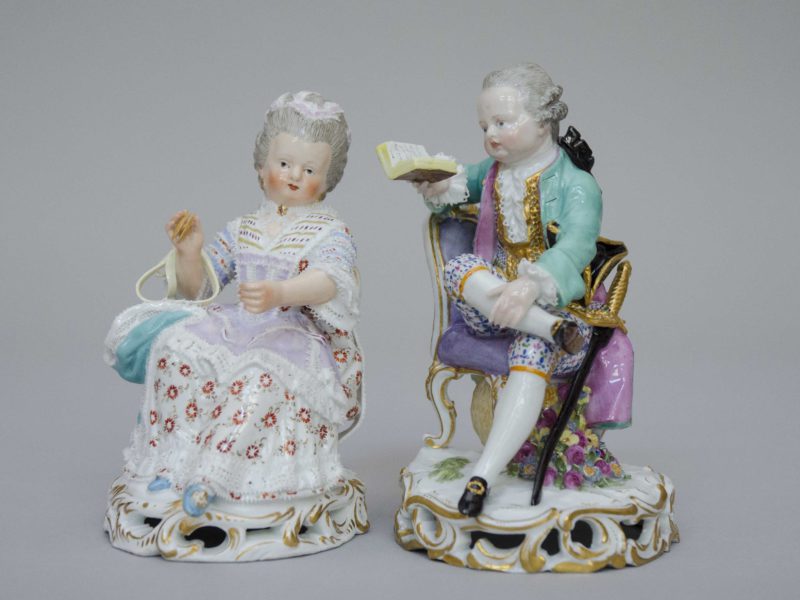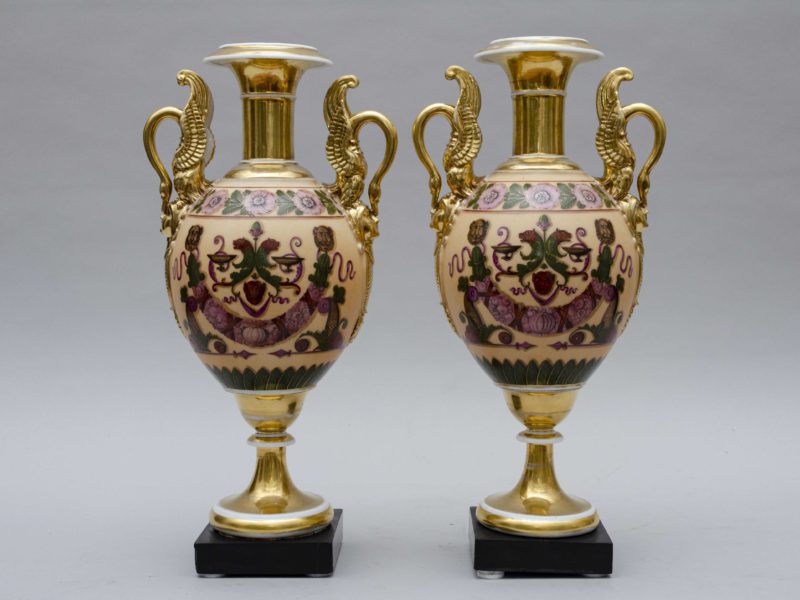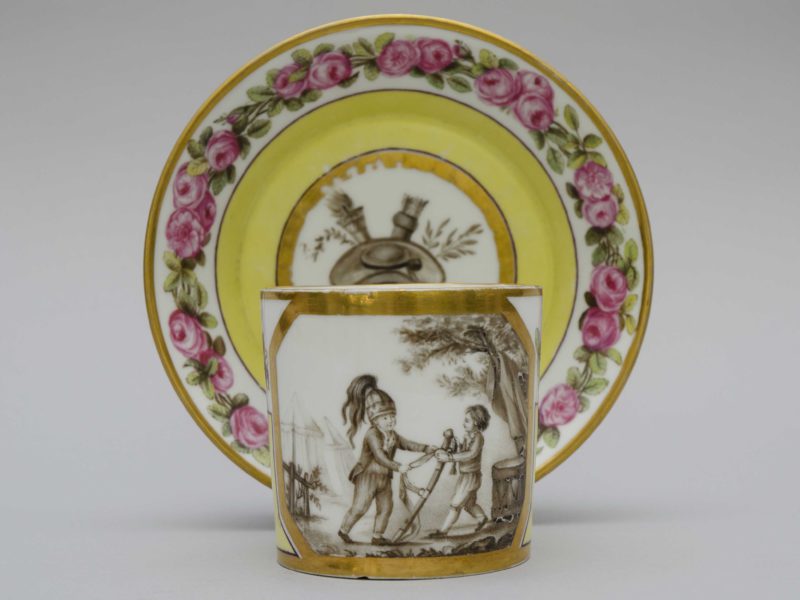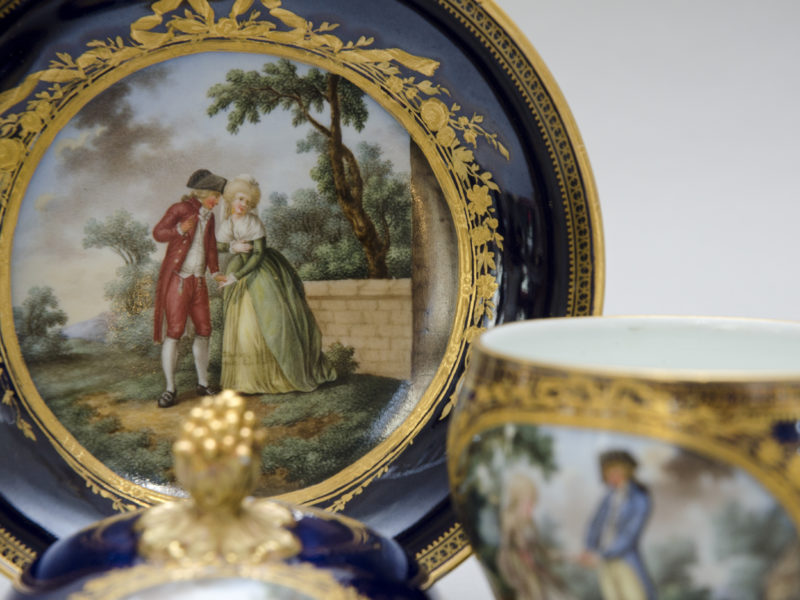
Monumental vase with flowers and angels, Baudour (Mons)
Out of stock
Exceptional monumental vase on pedestal with handles in the shape of threatening angels in the spirit of the Sèvres model made by the sculptor Etienne Maurice Falconet. Scenes painted on the body of the vase, on one side a gallant scene and on the other side angel musicians floating in the clouds. Magnificent branches and flowers in relief in the manner of the Meissen manufacture. Great quality of the golds. Marked with a crest in the neck of the vase. A small crack.
Size : Height : 80 cm – diameter of the base : 35 cm
Manufacture of François-Joseph Declercq in Baudour (Mons), Belgium.
This exceptional vase is a rare work for the manufacture of Baudour, it is undoubtedly a work of mastery presented during a major event to highlight the know-how of the manufacture.
Lit: On the territory of the commune of Baudour, located near Mons, several ceramic factories were established during the 19th and 20th centuries.
François-Joseph Declercq, a native of Givry and the son of a saddler, and his wife Eugénie Lazarus, bought the buildings of an old pottery factory in Rue d’Herchies in Baudour on 31 August 1842. Tradition has it that he worked in Meissen and Sèvres and that he had plans to create his own factory.
The following year, he created a company by succeeding in attracting investors: Declercq et Cie, of which he became the managing director, bringing into the business the building and the equipment necessary for production.
In 1845, Declerq joined forces with Nicolas De Fuisseaux, a lawyer from Mons. The new company Declerq et Compagnie does not only concern the Badour factory but also the trade of ceramics and crystal, which the Declerqs own in Mons. Declercq’s production was quite successful, winning its first medals in national competitions and mainly involving flower vases, coffee and tea sets and statuettes.
Declercq was able to count on qualified staff, some of whom came from Saxony and Sevres. Let us mention Ernest-Philippe La Vallée, a medallist in 1847, whom he had met at the L’Estroppe factory (Hal). It was also in 1847 that Baudour won a vermeil medal at the Belgian Industry Exhibition. In 1850, the painter Boulanger from Sèvres, will be occupied by Baudour.
The decision was taken to extend the surface area of the buildings and innovations were made to allow the use of coal for firing porcelain.
In 1848, Nicolas De Fuisseaux runs the company alone; Declerq leaves for Nimy to manage the earthenware factory. De Fuisseaux obtained patents for firing gold on porcelain. In 1857, he founded a new company, “La société Céramique Franco-Belge”, which prospered in the following years. Sales were made through a sales shop in Brussels.
When De Fuisseaux died (November 1857), his widow took over the management of the factory. She surrounded herself with valuable professionals: Adrien Chevalier, who ran the paint shop, Noël Dehoux and Michel Debacq. From 1875, the factory also manufactured porcelain electrical insulators. Important orders from the French government were received. In 1881, Mrs De Fuisseaux died. Her youngest son, Fernand, took over the factory by buying out his brothers’ shares. In 1898, the company name was changed to “Société Anonyme des Anciennes Usines de Fuisseaux”. Production consisted of white and decorated household items. In 1912, Fernand de Fuisseaux died and was succeeded by his son-in-law, Charles Greyson; after the First World War, the company was bought by the Société des Pavillons, which grouped together six porcelain, earthenware and crystal factories and was based in Brussels. The production is maintained in the tradition and the moulds from the beginning of the century are used. In 1934, the Société du Pavillon was absorbed by the Belgian ceramics company CERABEL, based in Baudour, which, despite the crisis, was a prosperous company.
Out of stock
Contact us
